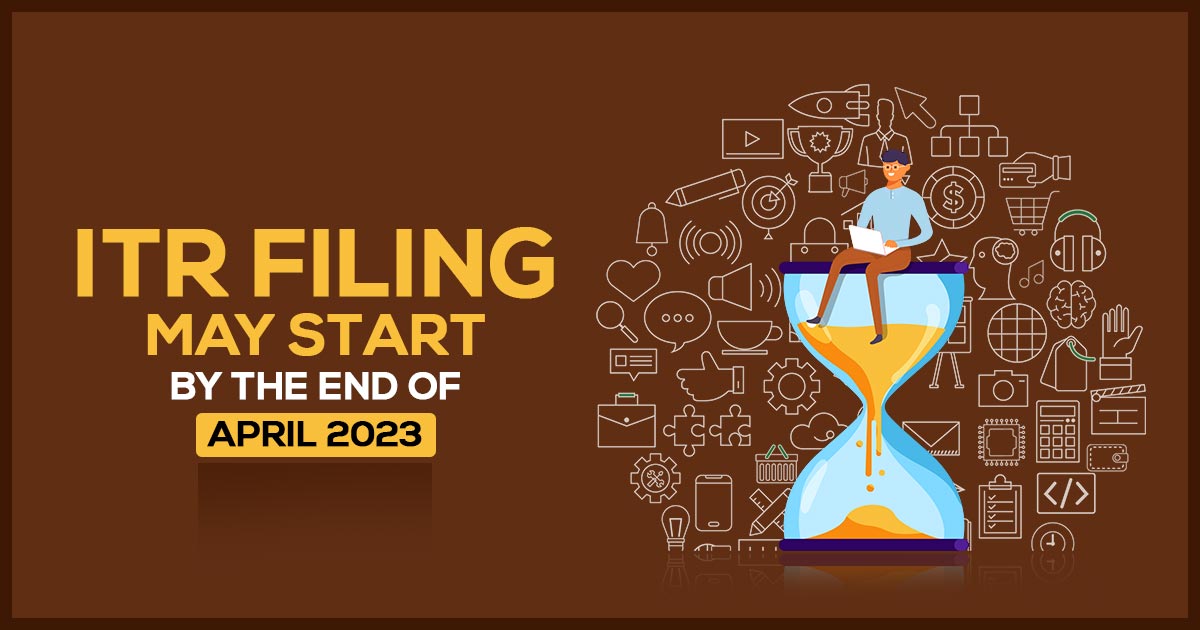
Soon the start of ITR e-filing for FY 2022-23 is anticipated. The experts would have anticipated that the assessees could initiate filing their returns from the former week of April or May first week. A new FY 2023-24 would get started from 1st April 2023. The assessees are obligated to file their ITR by 31st July for the FY 2022-23.
But, a salaried person may need to wait till June 2nd week as employers would be anticipated to generate Form 16 for the AY 2023-24 near that time. Currently, the Income Tax Department’s e-filing platform does not allow salaried taxpayers to file income tax returns (ITR) for the fiscal year 2023-24.
“The ITR filing season for AY 2023-24 is about to start. It can be assumed that the taxpayers will be able to file their ITR from April Last week or May first week. The filing will be done for the income earned in FY 2022-23, i.e., 1st April 2022 and 31st March 2023,” the tax expert mentioned.
Tax experts mentioned that salaried individuals might have to wait for another month. “Salaried individuals usually file their returns after receiving Form 16 from their employers. This form is generally issued in the first half of June. This means salaried employees may be able to start filing their returns from mid-June 2023 onwards till July 31, 2023,” he said.
Individuals and companies are required by the Income Tax Act to file their ITRs with the Income Tax Department following the end of each fiscal year. The due date for submitting an ITR is the deadline by which a person or company must file their return for a specific fiscal year in order to avoid any penalties or interest consequences.
In February of the same year, the Income Tax Department provided the ITR forms for individuals, Hindu Undivided Families, businesses, and others for the 2022-23 financial year.
The Central Board of Direct Taxes (CBDT) provided the notification on February 10 that ITR forms 1-6, ITR-V (verification form), and ITR acknowledgement form have been issued for the FY2022-23. In the former year, these forms were notified in the 1st week of April.
The assessees are enabled to download the ITR offline utility via the Downloads menu option and fill it after that they file the ITR via the identical process.
Seven kinds of ITR forms would be available that range from ITR 1 (Sahaj), ITR 2, ITR 3, ITR 4, ITR 5, ITR 6, and ITR 7, for different individuals, businesses, and companies.
When filing their tax return, it is critical that they use the right ITR form. If the incorrect ITR form is used to file the I-T return, the submission will be considered faulty, and the tax agency will send a notification to refill the return.
The ITR form should be chosen according to the sources of income within a specific fiscal year. ITR-1 and ITR-4 are more basic forms that serve a significant number of small and medium-sized taxpayers.
Important: Genius Best Tax Filing Software for CA, CS & Professionals
An individual with an income of up to Rs 50 lakh from salary, one residential property, and other sources (interest, etc.) can submit ITR-1. It is also appropriate for people with an agricultural income of up to Rs 5,000.
People who make money from their residential property must complete an ITR-2 form.
If a person or Hindu Undivided Family has income that falls under the category of “profits or gains of business or profession” but is not otherwise qualified to file Form ITR-1 (Sahaj), Form ITR-2, or Form ITR-4 (Sugam), they must utilize Form ITR-3.
Individuals, Hindu Undivided Families (HUFs), and businesses with a total income of up to Rs 50 lakh and income from business and profession can submit ITR-4.
Firms and corporations can file their income tax returns using ITR-5, ITR-6, and ITR-7. Limited liability partnerships (LLPs) and enterprises file ITR-5 and ITR-6.










good